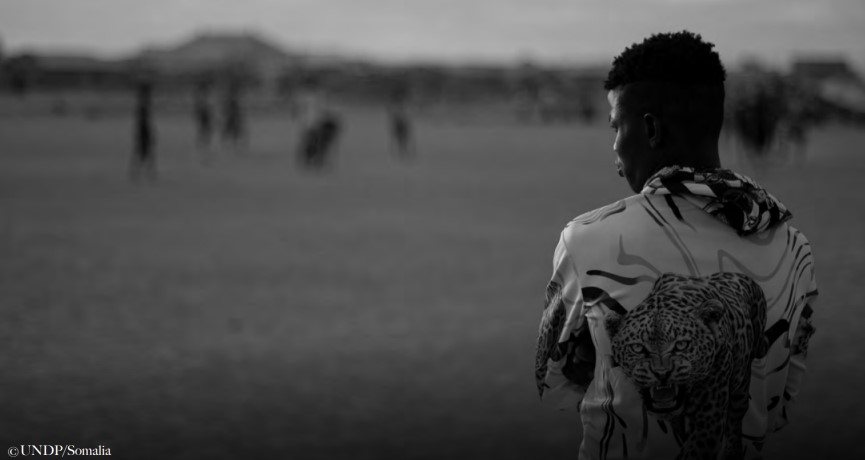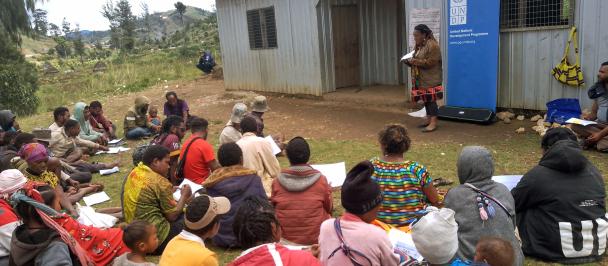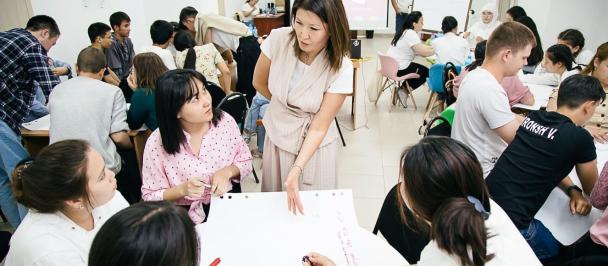The dynamics of violent extremism in sub-Saharan Africa
February 13, 2023

While each context has a unique mix of factors contributing to the growth of violent extremism, UNDP research uncovered common denominators that can inform relevant, coherent responses.
There is no better environment for the expansion of violent extremist groups than a vacuum in state authority. It provides ideal conditions for these groups to prey on existing and historical grievances, fill the void with promises of financial support, access to services and attention for marginalized, neglected communities. But, at what cost?
In sub-Saharan Africa, we are witnessing the toll. In the past decade, violence linked to the influence of global violent extremist groups like Al Qaeda and Daesh has spread swiftly across the region. In 2022, new global epicentres of terrorism were found in sub-Saharan Africa.
With thousands killed and millions displaced, this violence threatens the stability of the entire region and hinders development gains on the continent.
To better understand how violent extremist groups proliferate, and how they impact development and social cohesion, UNDP commissioned unique research to find out what gives violent extremists a foothold in particular contexts. We looked at the Sahel, the Lake Chad Basin, DR Congo, Somalia and Northern Mozambique. What we found is that while every country - and district - has its own story, there are clear common denominators that help design relevant, coherent responses.
This new study, Dynamics of Violent Extremism in Africa: Conflict Ecosystems, Political Ecology, and the Spread of the Proto-State complements the research we have done into how and why individuals join violent extremist groups in the Journey to Extremism series.
Filling the void
As they expand in size and resources, buttressed by a link to a global ideological orientation, some violent extremist groups organize in ways akin to local government structures. They begin to compete with the state not only by monopolizing the threat/use of violence – in this case, instilling terror – but also by promising some of the most essential local services that people are aspiring to, such as a relative sense of security, sources of income and swift adjudication of disputes. They may do so cruelly and oppressively, but even that may initially be attractive to communities weary of years of lawlessness, corruption and chaos. Indeed, the more deeply structured local violent extremist groups have evolved from raiding bands and now show many of the characteristics of a “proto-state”, typified by Daesh in Syria.
As the study findings suggest, the modus operandi of these local violent extremist groups is not centred mainly around persuading people to adopt their ideology. Instead – and often coming from the locality itself – they are grievance entrepreneurs, exploiting local development deficits, and forging alliances of convenience with other violent groups and criminal networks, like smugglers or local militias. Even so, this does not make them one-dimensional opportunists. Their link to global networks helps to give them direction, binds them together and adds to their appeal. They are both global and local, both ideological and economic alternatives that can be appealing to people living in perceived or de facto state vacuum.
One common finding in this study is that violent extremist groups rarely appear in places well served by stable, predictable governments and governance systems. Instead they operate where there is already poverty and instability, away from capital cities, in marginalized places where public services are thin or non-existent – all of which are often the product of local power-brokers’ interests. The lack of trust between communities in these remote and crisis-hit areas and their government is also a common factor highlighted in the research. All too often communities suffer acute insecurity, feeling let down, targeted, and abused by the very state that should be protecting them. Violent extremist groups then plug in to fear or anger among communities and local leaders.
The first step to addressing this growing trend is to understand the political economy of violent extremist groups, and the sources of their power, with a view to halt and reverse their stranglehold on society. The next step requires collaboration by the international community, supporting national partners not only to address the visible manifestations of the problem, but also to reverse years or decades of state fragility, exclusion and insecurity that emboldened these groups over time.
To this end, UNDP’s work on sub-national and local governance and institutions is critical – resilient, responsive, accountable, transparent, linked to national-level reforms that will have the biggest impact on violent extremist groups’ “business models.” UNDP also works to empower local communities and local leaders towards positive and inclusive governance and improving access to basic services in under-served areas. This is the way to avoid recreating the same conditions that enabled the governance void to exist in first instance.
Gaining a foothold
It is clear that many of the conflicts which give these groups a foothold are over land and water. Desertification, climate change and poor land management have made traditional ways of life difficult in many places where land has degraded and pastures no longer support herds, nor do farms support crops. But this need not be irreversible. With careful attention to local power politics, social relationships and trust-building, we can help communities to regenerate land and revive livelihoods – and to capture carbon in the soil in the process, offering local solutions to global problems and giving communities agency in shaping their present and future. We call it “political ecology”, and with this approach we can simultaneously improve lives and undercut the appeal of violent extremist groups.
Also crucial to this approach is understanding how illicit funds flow around an economy, both inside a country and across borders; how power-brokers depend on and manipulate instability and corruption for greater influence; and which actors have a real interest in reform. This knowledge can help identify and interdict income sources of violent extremist groups while sustainably rebuilding local economies.
A human-centred approach
While there is a common thread of misogyny in the narrative and behaviour of violent extremist groups, women’s roles are not homogenous or predestined to victimhood. On one hand, Boko Haram has used women as suicide bombers and al Shabaab as intelligence sources, but on the other hand women form the backbone of many peacebuilding and victim support efforts, and are the engine of cross-border trade in many areas. This very diversity makes it more important to ensure that both women and men are fully involved in our efforts, from analysis to implementation to evaluation.
In the end, where does the study address our collective approach to human security, to people-centred development, justice and peace?
These conflicts, and all the horrors committed by these groups, leave deep scars, and the trauma is long-lasting. Even in contexts that are not impacted by war, political conflict or pervasive violent extremism, we are starting to understand the cost of recent lockdowns and isolation during the COVID-19 pandemic, in mental health and alienation. In conflict zones the depth of trauma needs much more research, but we know it is severe. And people cope with it in ways that can lead to further violence, at a personal, family and community level. Sadly, that often helps to perpetuate cycles of conflict.
So, if we are to address these historical, multigenerational grievances which violent extremists can prey on, while working to heal their ongoing grief, we need to expand our capacity to provide the mental health and psycho-social support that individuals and communities need. And if we can do so, we can demonstrate in action the positive alternatives to hatred and violence that these groups peddle.
Development first
A new approach is needed – one that first invests in understanding and complex ways in which these violent extremist groups win hearts and minds in different communities, acting as alternatives to state authority. With this knowledge, we can work together with national and local governments to ensure a developmental, preventive, inclusive approach where people have access to the rights, goods and services they need to live prosperous lives, thus removing the power that these groups wield. Rather than helping people to get by; getting ahead, with hope and dignity, should be the goal.
Through this approach, we can improve the lives of citizens and communities across the region and turn back the tide of violence and despair. The challenge remains complex and urgent, and our collective responses must overcome by being more informed, adaptive, innovative and inclusive to promote and sustain development and peace.
To learn more, visit the UNDP Prevention of Violent Extremism website.
Note: The research study was prepared in a process co-led by the UNDP Regional Bureau for Africa (RBA) and the Crisis Bureau (CB) Conflict Prevention, Peacebuilding and Responsive Institutions (CPPRI)/Prevention of Violent Extremism (PVE) Team. The study paper was developed by lead researcher Peter Rundell and supporting researchers Olivia Lazard and Emad Badi, under the editorial direction of Noura Hamladji and Samuel Rizk, and coordination by Nika Saeedi and Nirina Kiplagat.

 Locations
Locations





